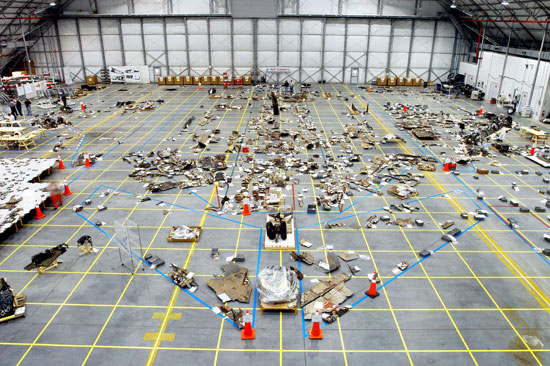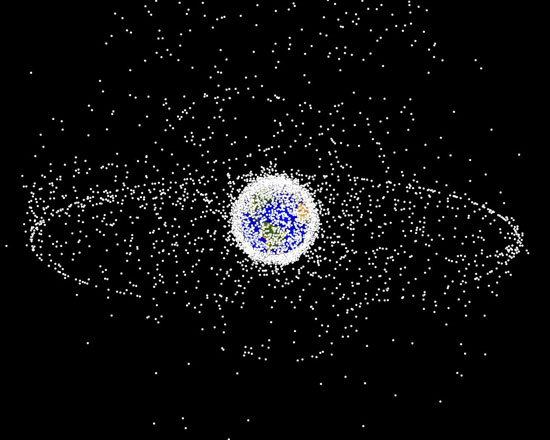In the early years of the twenty-first century there emerged a renewed interest in theoretical ideas of acceleration. The key figure in these discussions has been the British philosopher Nick Land. The term “accelerationism,” itself coined by Benjamin Noys (in a characteristically critical register), bares some explanation. As Noys defines it, accelerationism describes certain libertarian post-Marxist positions (Deleuze and Guattari’s Anti-Oedipus, Lyotard’s Libidinal Economy, and the Baudrillar...
Issue #46
June 2013
With: Gean Moreno, Alex Williams, Steven Shaviro, Benjamin H. Bratton, François Roche, Franco “Bifo” Berardi, Mark Fisher, Benedict Singleton, Debbora Battaglia, Patricia MacCormack, and John Russell
Where did the critical tradition of art go? Maybe that’s the wrong question. Because we know the answer. It went into spectacle. It went into finance. It got privatized, democratized, scrutinized, defunded, bureaucratized, then professionalized. The critical stick became a seductive carrot. But maybe we don’t have to see this only in terms of a fall from grace. Maybe this is the time for a long-overdue realism that an art field still in the thrall of modernist humanism struggles to avoid recogni...
View List
View Grid
11 EssaysJune 2013
Tout se résume dans l’Esthétique et l’Économie politique. Everything comes down to Aesthetics and Political Economy. Mallarmé’s aphorism is my starting point for considering accelerationist aesthetics.1 I think that aesthetics exists in a special relationship to political economy, precisely because aesthetics is the one thing that cannot be reduced to political economy. Politics, ethics, epistemology, and even ontology are all subject to “determination in the last instance” by the forces and rel...
1. Frame
Any conjunction between aesthetics and politics (for a political aesthetic, an aestheticized politics, a geopolitical aesthetic, a politics of aesthetics, and so forth) is necessarily fraught by estranged agendas—all the more reason for us to conceive of their inter-activation from a willfully ahumanist perspective. Aesthetics and/or politics of what and for what? The cascade of Anthrocidal traumas—from Copernicus and Darwin, to postcolonial and ecological inversions, to transphylum ...
… that seems to pretend to be a history of the stuttering position between Green and Grey, between chlorophyll addiction, the dream of an ideal biotope, re-primitivized, re-artificialized, in pursuit of the lost paradise, the lost Eden Park, a story for little boys and girls to put their fears to bed and … the Grey, the deep Grey, which never appears in the visible spectrum … (“The greatest trick the devil ever played was convincing the world that he did not exist,” said Baudelaire1) … an antago...
Is acceleration a condition for a final collapse of power?
Acceleration is the essential feature of capitalist growth: productivity increase implies an intensification in the rhythm of production and exploitation. The accelerationist hypothesis, nevertheless, points out the contradictory implications of the process of intensification, emphasizing in particular the instability that acceleration brings into the capitalist system. Contra this hypothesis, however, my answer to the question of whe...
We live in a moment of profound cultural deceleration. The first two decades of the current century have so far been marked by an extraordinary sense of inertia, repetition, and retrospection, uncannily in keeping with the prophetic analyses of postmodern culture that Fredric Jameson began to develop in the 1980s. Tune the radio to the station playing the most contemporary music, and you will not encounter anything that you couldn’t have heard in the 1990s. Jameson’s claim that postmodernism was...
The greatest escape of them all is about to blow the future apart.
—Escape from New York (John Carpenter, 1981), original theatrical movie trailer
Space travel produced some of the defining images of the twentieth century. Sputnik, Apollo, the spacesuit, the NASA logo and the toy-like outline of the space shuttle, liftoffs with all their countdown drama, and the peaceful image of the earth like a mica fleck against coal black; the weird underwater quality of footage shot in low gravity, ...
Backstory
Ethnography’s reach into the pluriverse of the contemporary moment has no shortage of surprises. In the summer of 2011, my interest in the anthropology of outer spaces drew me to Prague, where I participated as an official “observer” in an international conference on “space security.” The purpose of the event was to bring together space policy professionals and experts from the United States, Europe, and Japan, in support of drafting an International Code of Conduct for the Peaceful...
Learn the aesthetic error of submitting everything to a law: leveling the local event produces boredom and ugliness, a world without landscapes, books without pages, deserts. Take everything away and you will not see. To see space demands time, do not kill time. Avoid the symmetrical error of being satisfied with fragments.
—Michel Serres1
In Post-Cinematic Affect, Steven Shaviro defines accelerationist aesthetics in two ways. First, he points to the “‘disruption,’ or the radical ‘break,...
A car crash harnesses elements of eroticism, aggression, desire, speed, drama, kinesthetic factors, the stylizing of motion, consumer goods, status—all these in one event. I myself see the car crash as a tremendous sexual event really: a liberation of human and machine libido (if there is such a thing).
—J.G. Ballard, interview in Penthouse (September 1970)
The already-dead term “accelerationism” is productive as a way of thinking and negotiating the register of stupidity—or brutal idioc...










